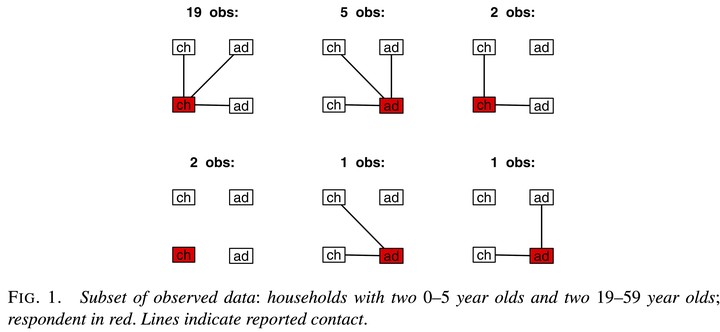
Abstract
Acute respiratory diseases are transmitted over networks of social contacts. Large-scale simulation models are used to predict epidemic dynamics and evaluate the impact of various interventions, but the contact behavior in these models is based on simplistic and strong assumptions which are not informed by survey data. These assumptions are also used for estimating transmission measures such as the basic reproductive number and secondary attack rates. Development of methodology to infer contact networks from survey data could improve these models and estimation methods. We contribute to this area by developing a model of within-household social contacts and using it to analyze the Belgian POLYMOD data set, which contains detailed diaries of social contacts in a 24-hour period. We model dependency in contact behavior through a latent variable indicating which household members are at home. We estimate age-specific probabilities of being at home and age-specific probabilities of contact conditional on two members being at home. Our results differ from the standard random mixing assumption. In addition, we find that the probability that all members contact each other on a given day is fairly low: 0.49 for households with two 0–5 year olds and two 19–35 year olds, and 0.36 for households with two 12–18 year olds and two 36+ year olds. We find higher contact rates in households with 2–3 members, helping explain the higher influenza secondary attack rates found in households of this size.